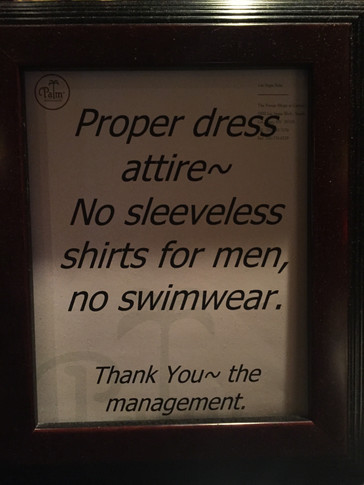6 Tips to Manage (& Prevent) Negative Stories
- Kara Holm
- Mar 31, 2017
- 5 min read
How can your business put the genie back in the bottle when social media hijacks the story?

United Airlines is struggling to regain control of the messaging related to its brand, after one of their employees refused to allow two young women wearing legging, who were travelling on “buddy passes,” to board a flight. The gate agent refused the pair because they did not meet the airline’s established dress code that applies to those who have the privilege of using family passes. The dress code prohibits tight fitting clothing, including leggings. The denied passengers were not the source of this story: the incident was captured for posterity by another passenger (at a different gate according to reports), and her Tweet went viral due to her many followers – she is a lobbyist. United was being labelled sexist across social media and traditional media channels. This is a serious business issue that can impact market capitalization, erode brand loyalty and cause losses in topline revenue.
Finding ways to control the dialogue and manage your brand in the age of social media is a real challenge for business today, when a small group of people with disproportionate influence can shift the dialogue and change consumer behaviour. The definition of truth is what the public believes… it doesn’t matter if the public has an incomplete view of the story. As Mark Twain famously said: “never let the truth get in the way of a good story.”
If this were a blog for the general population, I would take this opportunity to remind people to check the sources and explore both sides of the story before forming an opinion. This, however, is a business blog and our objective is to provide businesses with ideas that can help them improve their operations.
United Breaks Guitars

The leggings fiasco reminded me of another incident: this is not United’s first time at the rodeo. In 2009, the company experienced a public relations disaster when Nova Scotian musician Dave Carroll released his song “United Breaks Guitars.” The song became a huge hit on Youtube and attracted international media attention. At the time, United’s stock price was dropping (perhaps aided, in part due, to the negative publicity).
To gain control of the story, United Airlines contacted Mr. Carroll and, according to reports, asked if they could use his video in their employee training. The airline publicized this outreach. United also began replying to members of the public, who were posting through various social media channels on this topic, with messages expressing regret for Mr. Carroll’s experience. The airline included messaging about their focus on training. In effect, United was reminding social media users – who are in a way thought leaders if they have enough followers – that the vast majority of the thousands of bags handled by United and its employees every single day arrive at their final destination intact.
Take Charge: Face the Crisis Six Ways
If you, or one of your employees, have made a mistake, accept responsibility. Equally important: don’t apologize if you have done nothing wrong. You can regret the misunderstanding, but do not acknowledge an error if you were following your established policies and practices. United has stood by both the employee who turned the leggings-clad young women away, and its policy.
Find ways calmly to communicate the facts of the situation. Identify multiple channels to get your message out. Stick to your key message and don’t over-explain. I can speak from personal experience: as soon as you add (extraneous) details, you risk taking the conversation in a different direction. To control the message, you have to keep it simple and stay focused!
Use the opportunity as a teachable moment. Whether you made a mistake and were called out for it, as happened in United Breaks Guitars situation, or you were following protocols that were misinterpreted, as was the case this week, you and your team can always become smarter. After the storm passes – and no matter how bad things seem, the issue will diminish with time – do a post mortem about the events and objectively assess the situation. The most important (and often overlooked) step is to make a plan in order to activate your learnings.
Employee training is extremely important and requires continuous attention. Customer-facing employees should learn how to deal with delicate situations. And we’ve said it before, but it is worth repeating, empower your employees to resolve issues before they escalate.
All employees at all levels must understand that they are under constant surveillance by the public. Businesses have not caught up with the surveillance culture made possible by the ubiquity of smart phones. A moment in time can be converted into a crisis. Your team has to understand that they have to conduct themselves in a way that is beyond reproach. A misunderstanding can morph into an expensive public relations disaster. There is no anticipating what issues are going to catch the cultural Zeitgeist.
Companies should regularly review their policies to make sure they’re still relevant. Remember how fast the world is changing. We have only had the iPhone for a decade; but we are still catching up to the changes the device made to the way we think about our relationships with our customers, our employees and the public.
In case you’re interested in reading more about the leggings story, I am sharing a series of links.
I particularly recommend the excellent, balanced article by CNN’s legal commentator, Danny Cevallos, “United Airlines was right to bar leggings.” Mr Cevallos identifies one of the risks of social media that the public needs to be aware of: Twitter represents special interest voices, not the voice of the majority. People using this type of platform have undue influence because they are effective at engaging and activating like-minded people. The activist's tweet about the refusal had a disproportionate impact, because of her profile.
You can see the impact of different editorial perspectives on the narrative by comparing articles in two British papers: The Telegraph, which is typically more conservative, and The Guardian, a more liberal publication.
Even the titles of the articles purvey a certain perspective.
The Telegraph offers readers a short quiz at the end of the article: “What do you think of United Airlines’ explanation?” With two possible answers: 1) Fair enough 2) It’s still sexist to police young girl’s clothes in this way. When I took the quiz, 62% of The Telegraph’s readers said they accepted United’s approach.
See our story on the Saskatchewan bathroom mishap in Canadian Gaming Business here.
Obviously, this blog is not about “casual wear culture.” However, this may be my only opportunity to mentioned a sign located in the (celebrated) Ruth’s Chris Steakhouse in Harrah’s Casino, on the Las Vegas Strip. In case you can’t read the photo, the sign reads:
Dress Code Policy
Business Casual
No cutoff shirts or tank tops are permissible.
Please prepare to remove your hat or cap when dining within the restaurant.
Thank you for your cooperation.
Cut off shirts, apparently are where we draw the line for “business casual”. Good to know!
There’s also this sign from the now defunt Society Café at the Wynn Encore… "Proper dress Attire - No sleeveless shirts for men, no swimwear. Thank you - the management." This sign offers more evidence that United is holding on to standard that is quickly disappearing. It also suggests that there are (minimal) standards for men too.
Drawing Copyright Subarashii21 | Dreamstime.com










Comments